
Home |
||
|---|---|---|
Before the exhibitions |
Eight Impressionism exhibitions |
After the exhibitions |
|
||
Academic
Classicism and Romanticism
Academic painting in France
Ingres, Delacroix
If we consider the period before the Impressionist exhibitions in Paris, for example when the painters in Barbizon began to break new ground, we tend to associate this mainly with Impressionism and its direct precursors, as well as the subsequent movements based on revolutionary views, such as Post-Impressionism or the Nabis.
At that time, however, Impressionists were only a marginal phenomenon in the art world; 'official' art featured completely different names. The all-powerful academies, with their somewhat old-master teachings, ensured a princely livelihood for their officially recognised representatives, i.e. high recognition for those who had committed themselves to the academic style that prevailed at the time. A style that focused on the art of painting from before 1800 and allowed for nothing else. A style of painting that had been perfected technically, but continued to deal with themes such as mythology, battle scenes or idealised representations of the human body. An art form rooted in the past, preserving an idealised past, which excluded the present and became lifeless with its constant repetition. Translated with DeepL.com (free version)
To illustrate the low esteem in which Impressionist painting was held at the time: Gustave Caillebotte, one of the artists who participated in the Impressionist exhibitions but did not become a particularly famous painter, had collected 65 works by his colleagues and bequeathed them to the state upon his death in 1894. Three years of negotiations followed because the state did not want to accept the paintings. A compromise was reached, but the state rejected a large part of the works, which were still considered 'filth' at the time. Today, these paintings are highly regarded and often priceless.
Here are some examples of academic art recognised in France at the time:
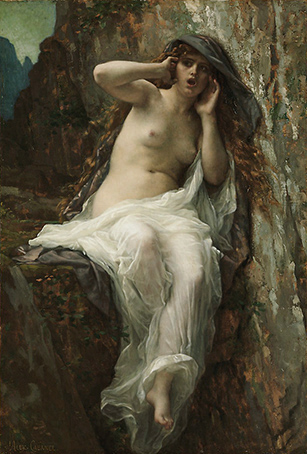
Alexandre Cabanel (1823-89) - Echo
1874 - 98 x 67 cm - Oil on canvas
The Metropolitan Museum of Art, New York, USA >
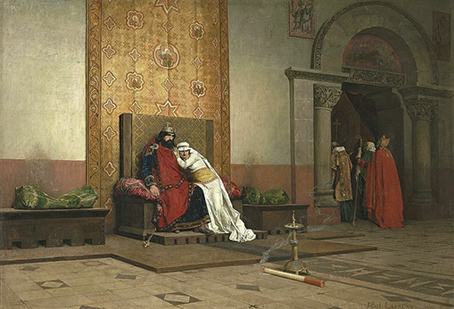
Jean-Paul Laurens (1838-1921) - L'excommunication de Robert le Pieux
1875 - 130 x 218 cm - Oil on canvas
Musée d'Orsay, Paris, France >
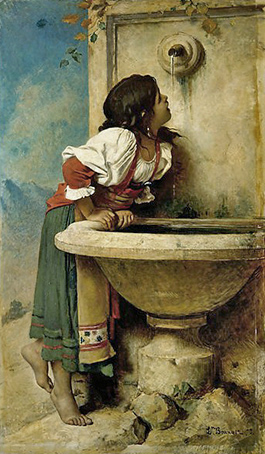
Léon Bonnat (1833-1922) - Fille romaine à une fontaine
1875 - 170 x 100 cm - Oil on canvas
The Metropolitan Museum of Art, New York, USA >
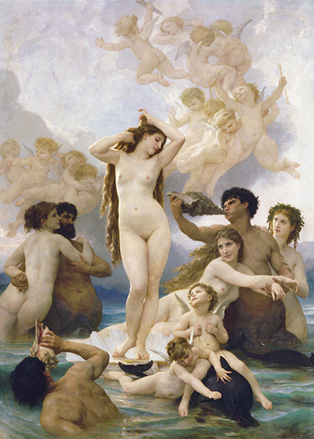
William Bouguereau (1825-1905) - Naissance de Vénus
1879 - 300 x 218 cm - Oil on canvas
Musée d'Orsay, Paris, France >
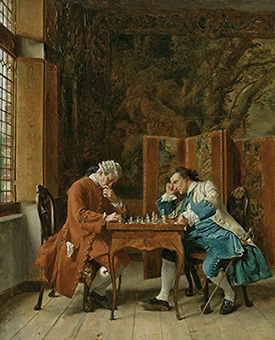
Ernest Meissonier (1815-91) - Die Schachspieler
1856 - 27 x 21,7 cm - Oil on mahogany wood
Hamburger Kunsthalle, Deutschland >
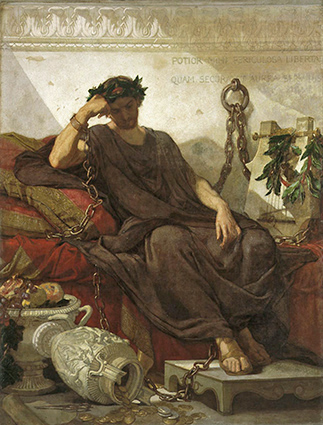
Thomas Couture (1815-79) - Damokles
1866 - 254 x 154 cm - Oil on canvas
Musée des Beaux Arts de Caen, France >
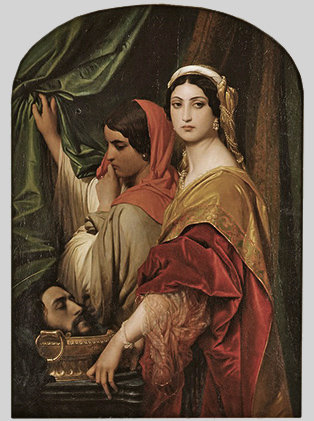
Paul Hippolyte Delaroche (1797-1856) - Herodias (Salome)
1843 - 129 x 98 cm - Oil on canvas
Wallraf-Richartz-Museum & Fondation Corboud, Köln, Germany >
(look Sammlungen > 19. Jahrhundert > Rundgang > Raum 4) >
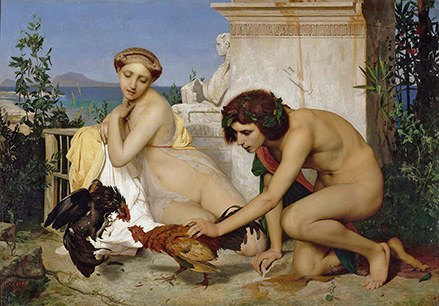
Jean-Leon Gerome (1824-1904) - Jeunes Grecs faisant battre des coqs
1846 - 204 x 143 cm - Oil on canvas
Musée d'Orsay, Paris, France >
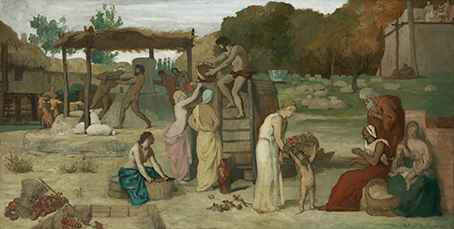
Pierre Puvis de Chavannes (1824-98) - Cider
ca. 1864 - 129 x 252 cm - Oil on paper, laminated on canvas
The Metropolitan Museum of Art, New York, USA >
The established artists of the time almost all referred to two role models: Ingres or Delacroix
One, Ingres, is categorised as a classicist, while Delacroix was more of a romantic, although he himself did not see it that way. As different as their artistic views were, which they also vehemently advocated, they were absolutely formative for officially recognised painting.
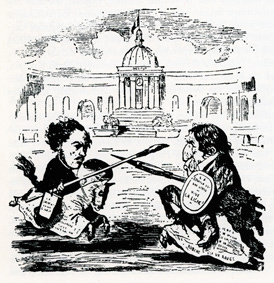
Caricature on the different views of Delacroix and Ingres:
Delacroix: "Line is colour!" Ingres: "Colour is utopia. Long live the line!"
Jean-Auguste-Dominique Ingres
*29.8.1780 in Montauban; † 14.1.1867 in Paris
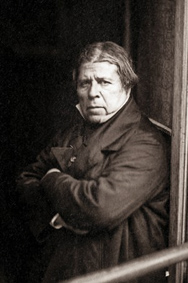
Ingres ca. 1856
Ingres was characterised by an extraordinary mastery of his craft and a keen perception of personality and precise classicist lines. He painted without diminishing vigour into old age. At the age of 82, he created his famous painting 'The Turkish Bath' (1863), which marks the high point of his unrivalled depictions of female nudes.
Baudelaire said of the paintings that Ingres believed "that nature must be corrected, changed" and that "happy trickery" was his duty...".
Ingres' paintings were not meant to be windows on the world. Ingres was seen as the keeper of tradition.
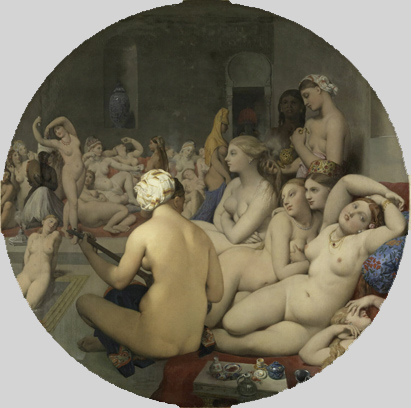
Le Bain Turc
1862 - 108 x 110 cm - Oil on canvas
Musée du Louvre, Paris, France >
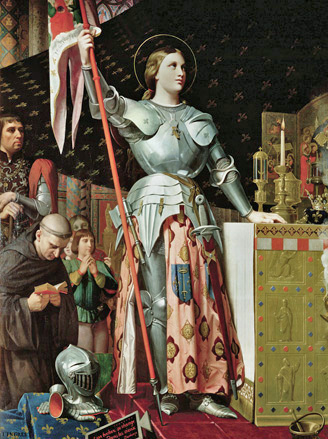
Jeanne d'Arc au cauronnement de Charles VII
1854 - 240 x 178 cm - Oil on canvas
Musée du Louvre, Paris, France >
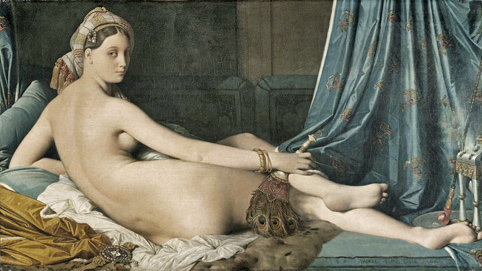
Une Odalisque
1814 - 92 x 162 cm - Oil on canvas
Musée du Louvre, Paris, France >
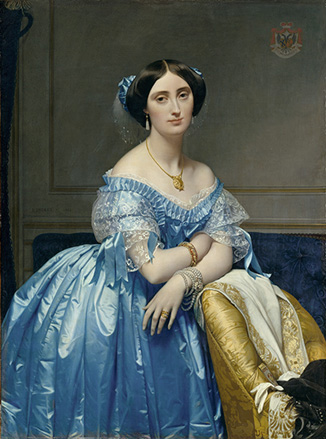
Joséphine-Éléonore-Marie-Pauline de Galard de Brassac de Béarn
Princesse de Broglie
1851/53 - 121 x 91 cm - Oil on canvas
Metropolitan Museum of Art, New York, USA >
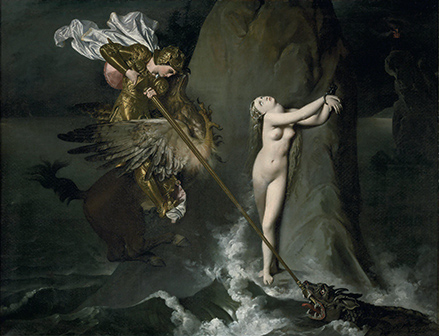
Roger délivrant Angélique
1819 - 147 x 190 cm - Oil on canvas
Musée du Louvre, Paris, France >
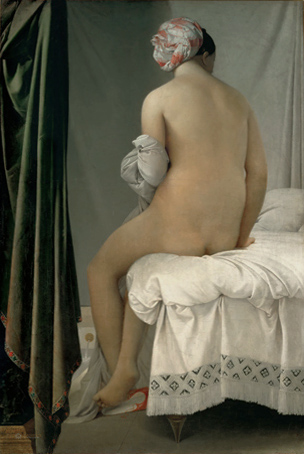
La Grande baigneuse
1808 - 146 x 96 - Oil on canvas
Musée du Louvre, Paris, France >
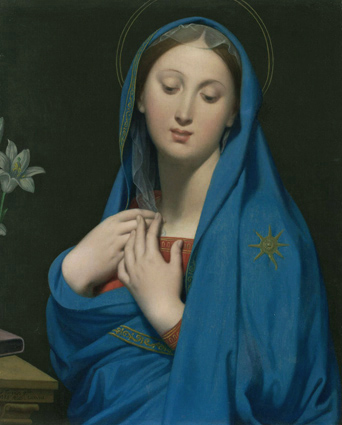
Vierge de l'Adoption
1858 - 69 x 56 cm - Oil on canvas
National Gallery of Victoria, Melbourne, Australia >
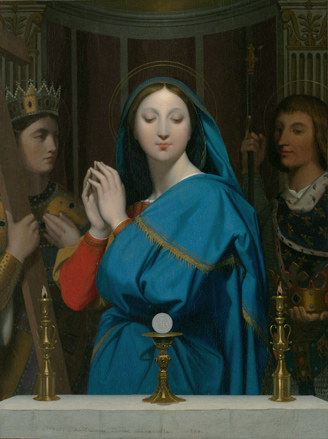
La vierge adorant l'hostiee
1852 - 40 x 33 cm - Oil on canvas
Metropolitan Museum of Art, New York, USA >
-----
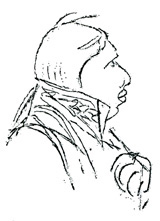
Drawing by Edgar Degas: Ingres as a member of the Academy
Ferdinand Victor Eugène Delacroix
* 26.4.1798 in Charenton-Saint-Maurice; † 13.8.1863 in Paris
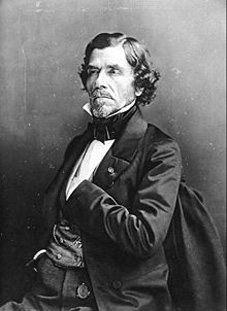
Photo by Nadar: Delacroix
Every year, Delacroix exhibited paintings at the Paris Salon whose passionate subjects caused a sensation and often shocked. His work was enthusiastic, with technical mastery. He worked tirelessly, art was at the centre of his thoughts and life.
His relationship to the world was characterised by fundamental scepticism and contempt for humanity. The images show an abundance of horror: loneliness, fear and despair, fire and smoke levelling cities, raped women, slit throats, children crushed by horses.
"Art is not, as is popularly assumed, a kind of inspiration from which no one knows where it comes and which, depending on chance, only represents the picturesque surface of things. It is rather reason itself, embellished by genius in a necessary course and determined by higher laws." (Delacroix)
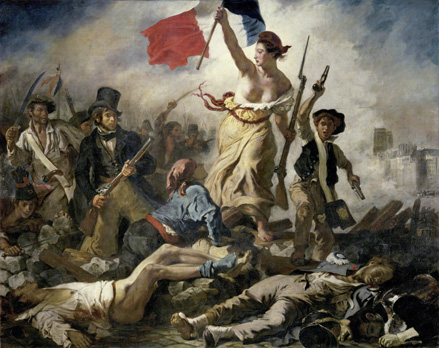
Le 28 Juillet. La Liberté guidant le peuple
1830 - 260 x 325 cm - Oil on canvas
Musée du Louvre, Paris, France >
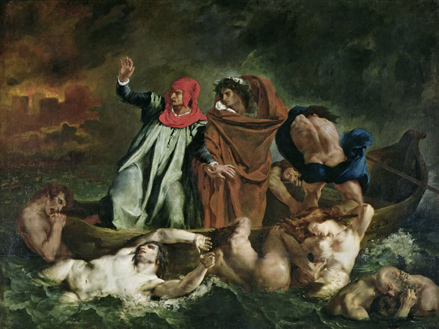
La Barque de Dante
1822 - 189 x 244 cm - Oil on canvas
Musée du Louvre, Paris, France >
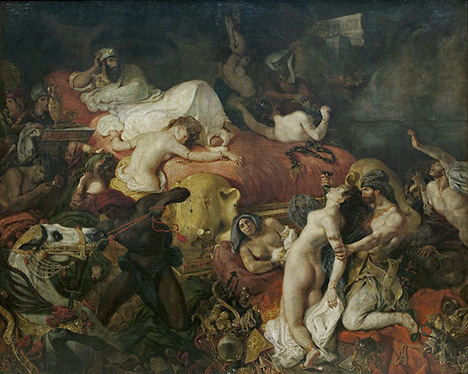
La mort de Sardanapale
1827/28 - 395 x 495 cm - Oil on canvas
Musée du Louvre, Paris, France >
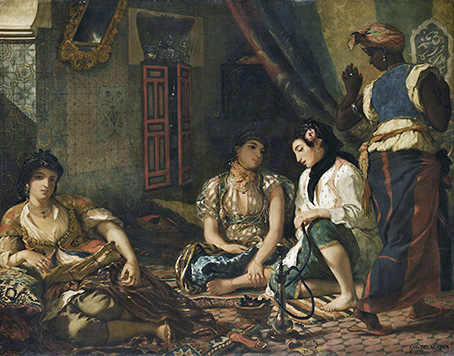
Femmes d'Alger dans leur appartement
1834 - 180 x 229 cm - Oil on canvas
Musée du Louvre, Paris, France >
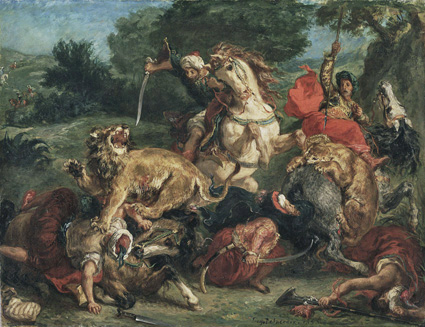
La Chasse aux lions au Maroc
1855 - 81 x 100 cm - Oil on canvas
National Museum, Stockholm, Sweden >
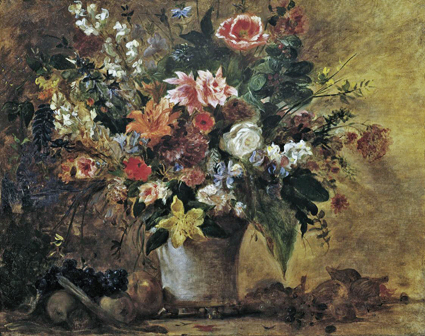
Fleurs nature morte
1834 - 74 x 93 cm - Oil on canvas
Österreichische Galerie Belvedere, Wien, Austria >
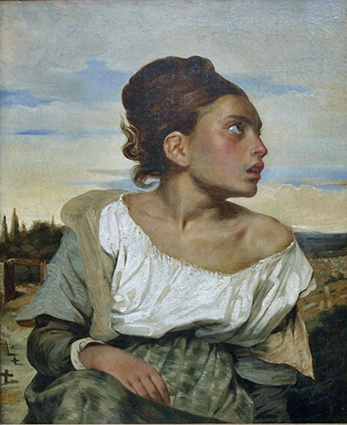
Jeune orpheline au cimetière
1824 - 60 x 50 cm - Oil on canvas
Musée du Louvre, Paris, France >
Ingres / Delacroix |
Gustave Courbet |
|
|---|---|---|
Imprint |